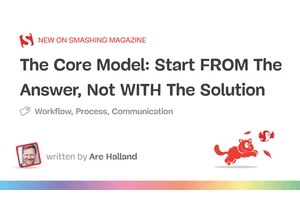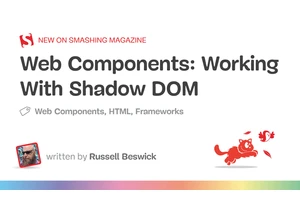Have you ever thought about how the limitations of early cartoon animations might relate to web design today? From looping backgrounds to minimal frame changes, these retro animation techniques have surprising parallels to modern CSS. In this article, pioneering author and web designer Andy Clarke shows how he applied these principles to Emmy-winning composer Mike Worth’s new website, using CSS to craft engaging and fun animations that bring his world to life. https://smashingmagazine.com/2025/05/smashing-animations-part-1-classic-cartoons-inspire-css/
Connectez-vous pour ajouter un commentaire
Autres messages de ce groupe

Prompting isn’t just about writing better instructions, but about designing better thinking. Ilia Kanazin and Marina Chernyshova explore how advanced prompting can empower different product & design u

Internationalization isn’t just translation. It’s about formatting dates, pluralizing words, sorting names, and more, all according to specific locales. Instead of relying on heavy third-party librari

Design systems are more than style guides: they’re made up of workflows, tokens, components, and documentation — all the stuff teams rely on to build consistent products. As projects grow, keepi

Talking points. Smart questions. A compelling story. This guide helps you prepare for your UX job interview. And remember: no act of kindness, however small, is ever wasted. https://smashingmagazine.c

Do you need a little inspiration boost? Well, then our new batch of desktop wallpapers might be for you. The wallpapers are designed with love by the community for the community and can be downloaded

The Core Model is a practical methodology that flips traditional digital development on its head. Instead of starting with solutions or structure, we begin with a hypothesis about what users need and

Web Components are more than just Custom Elements. Shadow DOM, HTML Templates, and Custom Elements each play a role. In this article, Russell Beswick demonstrates how Shadow DOM fits into the broader
